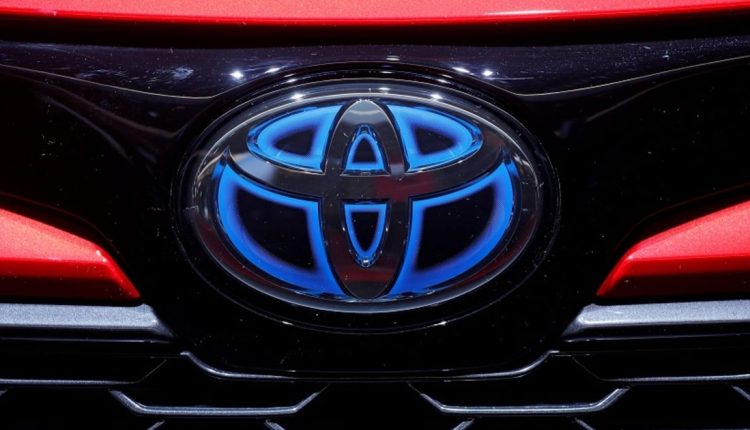TOKYO — Just as a World Cup soccer team adjusts its player formation for a new opponent, Toyota’s recently appointed CEO Koji Sato is reordering his lineup for a challenging new era.
That is the scene unfolding today at the world’s largest automaker as Sato picks a new management team before he takes the helm from current boss Akio Toyoda on April 1.
“Compare it to soccer,” Toyota’s Chief Communication Officer Jun Nagata said on Thursday, while announcing quarterly financial results for Toyota.
“The Japanese soccer team for the World Cup took different formations depending on their opponent teams, Germany or Spain,” Nagata said. “Likewise, our new management team will adopt various formations in managing the company. President Toyoda thinks the company has reached a stage where a younger team can run it in a different management style.”
Added Nagata: “Toyota will be led by Captain Sato’s team.”
Toyoda, the grandson of the automaker’s founder, has led Toyota through a centralized management style that has increasingly been centered around himself as a top-down leader. But as Toyoda steps back as chairman from April 1, he said teamwork will be key to Sato’s success.
In announcing Sato’s appointment on Jan. 26, Toyoda said he had an important bit of advice for the current Lexus International chief: “Do not try to run the company on your own but as a team.”
Indeed, Toyoda has big expectations for the next generation of leaders picked by Sato.
“The new team under upcoming President Sato has a mission to transform Toyota into a mobility company,” Toyoda last month while announcing the shuffle. “He has youth and like-minded colleagues. I expect this new team to go beyond the limits that I cannot break through.”
Challenging era
Details of Sato’s new team – let alone who will be on it – are still taking shape. But at last month’s announcement, he gave a sneak peek at the big picture.
“Our new team, under the theme of ‘inheritance and evolution,’ will implement product-centered and region-centered management, while valuing the philosophy of our company’s founding and will endeavor to fully redesign Toyota into a mobility company,” he said.
Among Sato’s challenges will be determining just exactly what a “mobility” company is, in addition to ramping up the Japanese automaker’s competitiveness in the global electric vehicle race. Also on the to-do list: addressing the avalanche of change wrought by software defined cars, autonomous driving, and connectivity, as well as new rivals from Silicon Valley, China and beyond.
Nagata said he did not know when Captain Sato would announce his team’s new formation.
Just for the record, during the World Cup held late last year in Qatar, the Japan national team pulled off stunning upset victories over heavyweights German (2-1) and Spain (2-1) to advance into the Round of 16. There, it lost in a shootout finish to eventual third-place winner Croatia.
Production cuts, again
Among other headaches facing Sato will be the ongoing global semiconductor shortage.
In announcing quarterly financials, Toyota again trimmed its global production target for the current fiscal year ending March 31, this time by 100,000 vehicles, citing tight chip supplies.
Toyota now expects to make 9.1 million Toyota and Lexus brand vehicles.
The new target is down from the 9.2 million announced in November, when Toyota cut the outlook from 9.7 million. But it still represents an increase over the previous year’s 8.57 million.
Toyota is triaging supply constraints by reconfiguring the vehicle specifications for chips that are in more plentiful supply and by trying to use more low-spec chips, Nagata said.
Business in the crucial U.S. market have been especially hard hit by the semiconductor shortage because Toyota sells a lot of high-end, large-size vehicles there that require a lot of chips.
Supply constraints there, as well the impact of foreign exchange rates and inflation, drove Toyota’s North American business to a regional operating loss in the October-December quarter.
As for when chip supplies will return to normal, Nagata said: “God only knows.”
Profits up
Still, on a parent-company basis, Toyota reported a healthy overall profit rebound in the fiscal third quarter ended Dec. 31. Global operating profit expanded 22 percent to 956.6 billion yen ($7.25 billion) in the October-December quarter.
Toyota’s operating profit margin shrank to 9.8 percent, from a robust 10.1 percent the year before.
Toyota said net income essentially flatlined at 1.03 trillion yen ($7.81 billion), while revenue advanced 25 percent to 9.75 trillion yen ($73.94 billion).
The company’s results were lifted by helpful foreign exchange rates.
The Japanese yen’s steep 24 percent year-on-year loss of value against the U.S. dollar boosted quarterly operating profit by a whopping 480.0 billion yen ($3.64 billion).
Global sales climbed 16 percent to 2.33 million vehicles in the three-month period. The consolidated figure covers deliveries for the Lexus and Toyota brands, as well as Daihatsu and Hino.
Worldwide retail sales increased 7.9 percent to 2.72 million vehicles in the quarter.
Skyrocketing raw material prices – aggravated by the Japanese yen’s decline against the U.S. dollar – took a 345.0 billion yen ($2.61 billion) bite out of quarterly operating profit.
That more than wiped out gains Toyota reaped from various cost reduction efforts.


